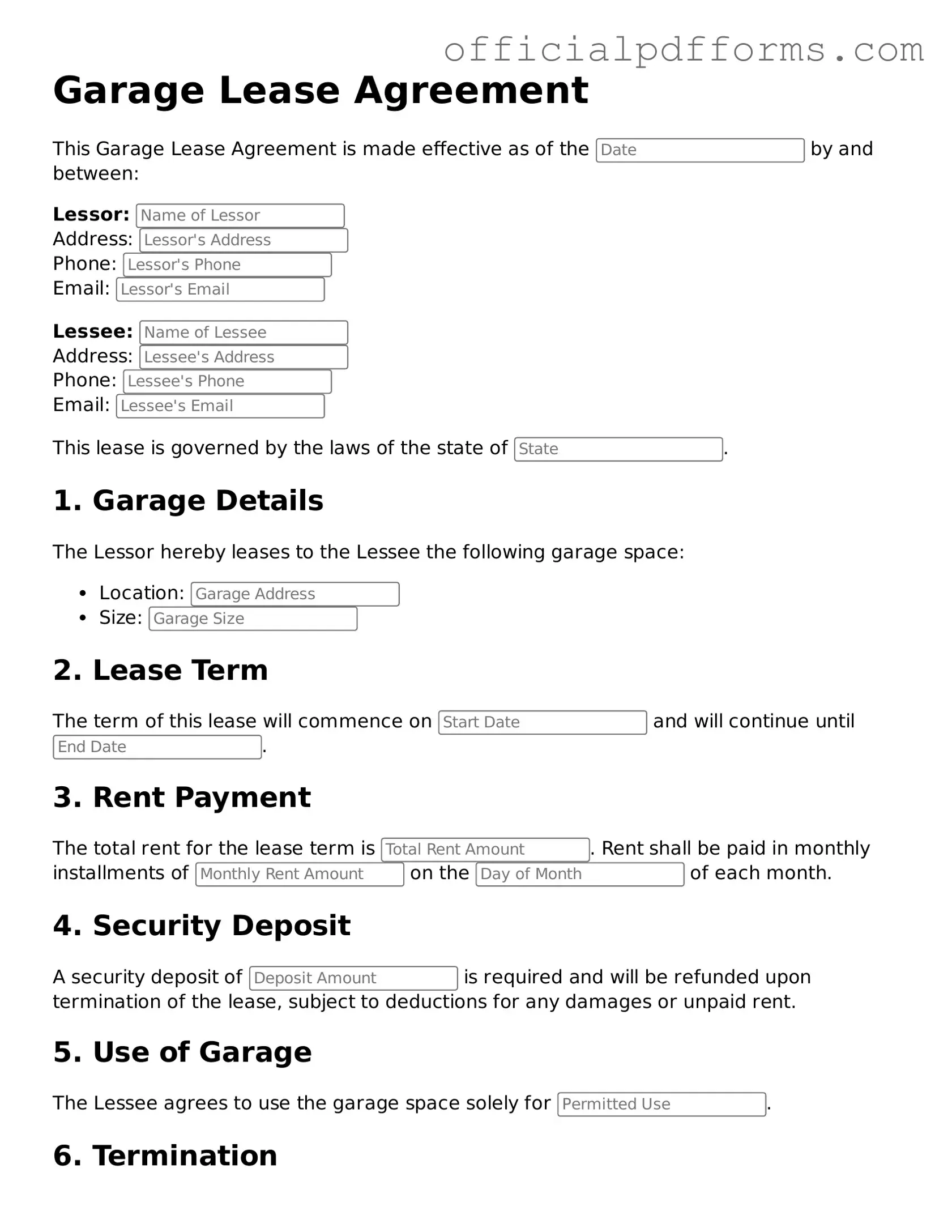What is a Garage Lease Agreement?
A Garage Lease Agreement is a legal document that outlines the terms and conditions under which one party (the lessor) allows another party (the lessee) to use a garage space for a specified period. This agreement typically includes details such as rental payments, duration of the lease, and responsibilities of both parties.
Who typically uses a Garage Lease Agreement?
This agreement is commonly used by property owners who want to rent out their garage space and individuals or businesses seeking a place to store vehicles or other items. It can be beneficial for those who need extra storage without committing to a long-term rental of a larger property.
What key elements should be included in a Garage Lease Agreement?
When drafting a Garage Lease Agreement, consider including the following elements:
-
Names and addresses of both the lessor and lessee
-
Description of the garage space being leased
-
Lease term, including start and end dates
-
Rental payment amount and due dates
-
Security deposit requirements
-
Maintenance responsibilities
-
Terms for termination of the lease
-
Liability and insurance clauses
How much does it typically cost to lease a garage?
The cost of leasing a garage can vary widely based on several factors, including location, size, and amenities. On average, rental prices can range from $50 to $300 per month. It's advisable to research local market rates to set a fair price.
Can I use the garage for purposes other than parking a vehicle?
Yes, many individuals use garage spaces for various purposes, such as storage for personal items, workshops, or even small business operations. However, it's important to specify these uses in the lease agreement and ensure they comply with local zoning laws.
What happens if the lessee damages the garage?
If damage occurs, the lease agreement should outline the lessee's responsibility for repairs or compensation. Typically, the security deposit may be used to cover any damages beyond normal wear and tear. Clear communication about expectations can help prevent disputes.
Can the lease be terminated early?
Yes, the lease can be terminated early, but the process should be clearly defined in the agreement. This might include notice periods and any penalties for early termination. Both parties should agree to the terms to avoid misunderstandings.
Is it necessary to have a written Garage Lease Agreement?
While verbal agreements can be legally binding, having a written Garage Lease Agreement is strongly recommended. A written document provides clear terms and can serve as evidence in case of disputes. It protects both the lessor and lessee by outlining their rights and responsibilities.
What should I do if there is a dispute regarding the lease?
If a dispute arises, the first step is to communicate directly with the other party to resolve the issue amicably. If that fails, refer to the terms outlined in the lease agreement. Mediation or legal advice may be necessary if the dispute cannot be resolved through direct communication.
